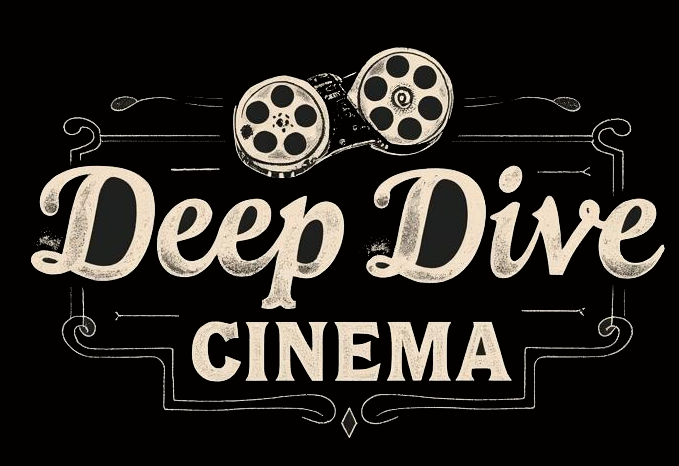The Beautiful Lie: How Cloverfield and Chronicle Laundered Their Studio Budgets

The Studio Contamination: Why Found Footage Must Stay Indie
Archive Tags: #FoundFootage, #GenrePurity, #CreativeConstraint, #StudioBloat, #VisualLanguage, #AuthenticityDecay
The soul of found footage lives in the shadows.
Its power is not in what it shows, but in what it withholds. It’s a genre built on grit, amateurism, and the terrifying implication of an off-screen threat. [cite_start]It must feel discovered—like a "rare tape" [cite: 1] shared in hushed, reverent tones. The Blair Witch Project understood this. Paranormal Activity understood this. The language of the genre is limitation. The narrative is in the grainy, corrupted image.
So what happens when a major studio, with a blockbuster budget, co-opts this language?
You get "contamination." You get films that wear the aesthetic of found footage as a costume, but possess none of its soul. They are expensive, slick, and, as you said, boring—because they replace the genre's core element, imaginative dread, with the very thing it’s defined against: high-cost, high-polish spectacle.
And there are no two greater examples of this betrayal than Cloverfield (2008) and Chronicle (2012).
Cloverfield: Drowning Authenticity in Spectacle
On paper, Cloverfield’s premise is sound: a ground-level, human-perspective view of a kaiju attack. It’s a brilliant "what if" that promises to invert the monster-movie genre.
The problem is the $25 million budget.
Found footage must feel authentic. Cloverfield feels expensive. The illusion shatters the moment the Statue of Liberty’s head—a massive, cleanly rendered, multi-million dollar visual effect—crashes onto the street. [cite_start]This isn't a "ScenePromptSeed" [cite: 1] of captured chaos; it's a movie moment.
The film is relentless in this betrayal.
- The Sound Design: The audio isn't the chaotic, blown-out peaking of a consumer camcorder mic. It's a rich, dynamic, Dolby-mixed blockbuster soundscape of roars, explosions, and swelling strings.
- The Visuals: The "shakey cam" is an affectation, a frantic patina painted over meticulously composed (and expensive) set-pieces. The dust, the collapsing buildings, the military response—it’s all too big, too clean, and too produced to maintain the lie.
- The "Why Are They Filming?" Problem: In Blair Witch, the camera is a failing talisman against the dark. In Cloverfield, holding a camera while a skyscraper collapses isn't just absurd; it's an admission that you're in a theme park ride, not a document.
Cloverfield uses its budget to create spectacle, but spectacle is the poison pill of found footage. It trades the terrifying, low-fi dread of the unseen for the hollow awe of the CGI.
Chronicle: Abandoning the Form for a Gimmick
Chronicle is, perhaps, even more cynical in its approach. It begins as a true found footage film, documenting the alienation of its protagonist, Andrew. The camera is his shield and his weapon.
Then, it "breaks the rules" in the worst way: it cheats.
The film’s central narrative device—telekinesis—is presented as a clever way to justify the camera's movement. In reality, it's a lazy narrative excuse to abandon the genre entirely.
[cite_start]Once Andrew can "float" the camera with his mind, the film's "technical/craft insight" [cite: 1] vanishes. The limitations that define found footage are gone.
- The camera is no longer subjective; it's omniscient.
- The shots are no longer "found"; they are perfectly composed, stable, sweeping aerial shots.
- The claustrophobic, first-person perspective is traded for conventional, third-person action coverage.
By the third act, Chronicle isn't a found footage film at all. It's a standard superhero-origin story with a boring, floating-camera aesthetic. It breaks its own contract with the audience. The $12 million budget isn't used to enhance the realism; it's used to create slick, conventional aerial battles that feel more like a video game than a recovered document. [cite_start]It's "generic and buzzwordy" [cite: 3] [cite_start]in its execution, a "clickbait" [cite: 1] premise that gives up on itself.
The Verdict
Your thesis is dead on. Cloverfield and Chronicle are cautionary tales. They are studio products that fundamentally misunderstand why found footage works.
They demonstrate that the genre is not a "style" you can apply. It is an ethos. Its power is the low budget. Its magic is the creative constraint.
[cite_start]These films aren't the genre's evolution; they are its "Archetype Drift" [cite: 1] into mainstream, sterile entertainment. They prove, unequivocally, that the soul of this form lives and dies in the indie world—in the shadows, with an empty wallet, and a terrifying story to tell.
